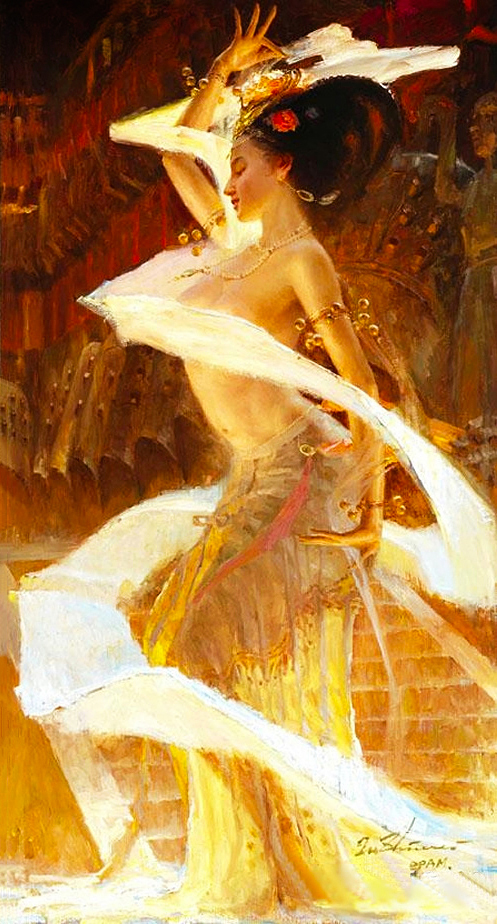敦煌乐舞 Buddhist Dancers: "Joyful Dance" 乐舞 Series by Zhiwei Tu 涂志伟
Music: Xian
This series of oil paintings by the grand master Zhiwei Tu 涂志伟 depicted the many scantily clad Chinese dancers during the height of Buddhist influence in Tang China. The artstyle is inspired by the Dunhuang depictions of dancers and celestial spirits called apsaras.
→ ☯ [PLEASE SUPPORT ME @ PATREON] ☯ ←
Thank you to my Patrons who has contributed $10 and above:
You helped make this happen!
➢ ☯ José Luis Fernández-Blanco
➢ ☯ Vincent Ho (FerrumFlos1st)
➢ ☯ BurenErdene Altankhuyag
➢ ☯ Stephen D Rynerson
➢ ☯ Steven Chan
➢ ☯ Michael Lam




















Comments
https://www.askideas.com/media/45/Architecture-Inside-The-Mogao-Caves-China.jpg
https://www.askideas.com/media/45/Painting-On-The-Walls-Inside-The-Mogao-Caves-Dunhuang.jpg
Also in western China, there are quite a number of women depicted by Tarim natives of earlier periods that featured lithe dancing women, looking almost identical from dancers from Hindu caves in Ajanta. Take a look at the dancers of the Kizil Caves
https://upload.wikimedia.org/wikipedia/commons/4/44/Dance_of_Chandraprabha%2C_Kizil_Caves.jpg